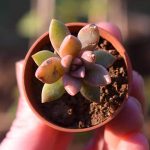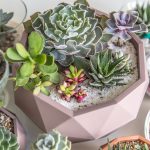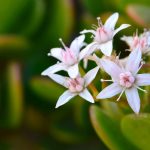Delve into the enchanting world of ghost plants, scientifically known as Graptopetalum paraguayense, and discover expert advice from gardening enthusiast Emily Horn on the process of planting, nurturing, and maintaining these captivating succulents. If you’re contemplating adding a ghost plant to your indoor green space, this guide is a must-read.
Cacti & Succulents
Learn How to Cultivate Ghost Plants in Your Indoor Garden
Getting to Know Ghost Plants
Over the years, succulents, renowned for their low-maintenance appeal, have garnered popularity as indoor adornments. Among the array of pink succulents adorning homes, the mesmerizing ghost plant stands out for its unique hue and effortless care requirements.
Ghost plants emanate pinkish-yellow hues when basked in abundant sunlight, transitioning to a cool blueish-gray under shaded, cooler conditions. Their adaptability and striking color variations make them sought-after additions to indoor gardens worldwide.
Given their resilience, distinct coloring, and widespread acclaim, ghost plants are favored choices for indoor spaces. Thinking of incorporating one into your living area? Below, uncover insights on how to effectively plant, foster, and nurture ghost plants in your home.
|
Plant Type
Succulent
Family
Crassulaceae
Genus
Graptopetalum
Species
Graptopetalum paraguayense |
Native Area
Mexico
Exposure
Full to Partial Sun
Height
6-12 inches
Watering Requirements
Low |
Aphids, Mealybugs, Spidermites
Low
Well-draining Succulent Mix
10-11
What is a Ghost Plant?
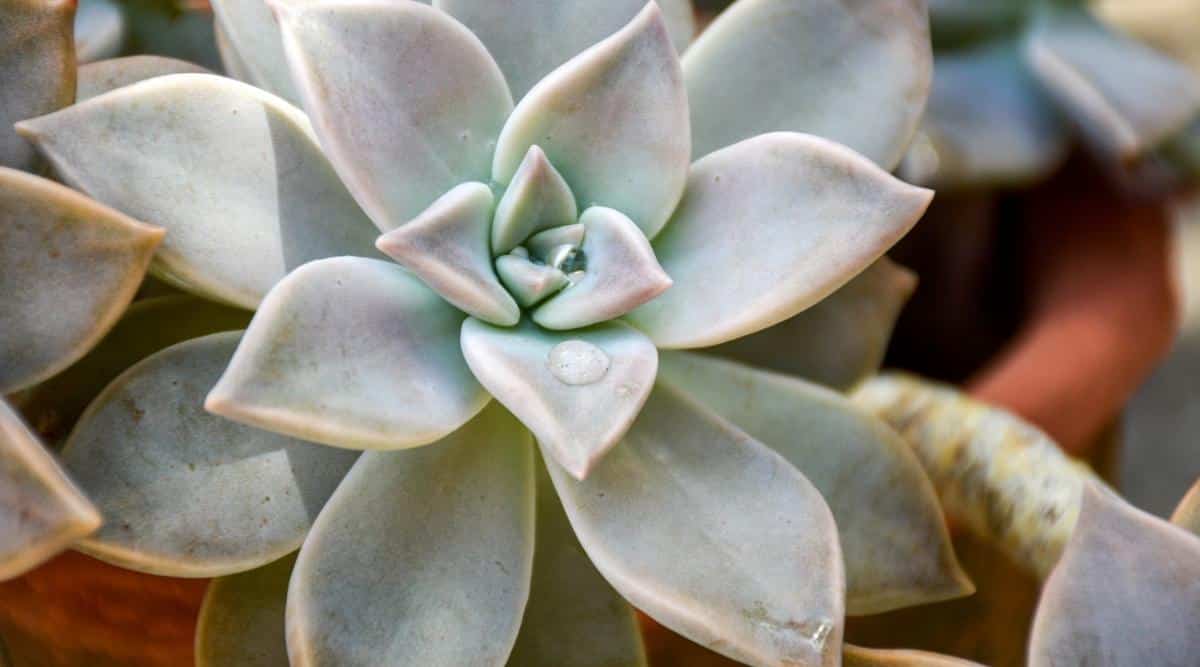
A medium-sized flowering succulent, the ghost plant, Grapetolpetalum paraguayense, produces rosettes that can reach up to 4 inches wide and 12 inches tall, with some cultivars trailing over 36 inches.
Ghost plants are versatile and cater to various environmental settings, making them ideal choices for both novice and experienced plant connoisseurs.
Belonging to the Crassulaceae family, which also houses jade plants, kalanchoe, and sedum, Graptopetalum paraguayense boasts thick, fleshy grayish-blue to reddish-yellow leaves in a rosette arrangement. Occasional scapes bearing white or yellow star-shaped flowers add to the plant’s allure, making it a stunning inclusion in any arid plant collection.
Native Area
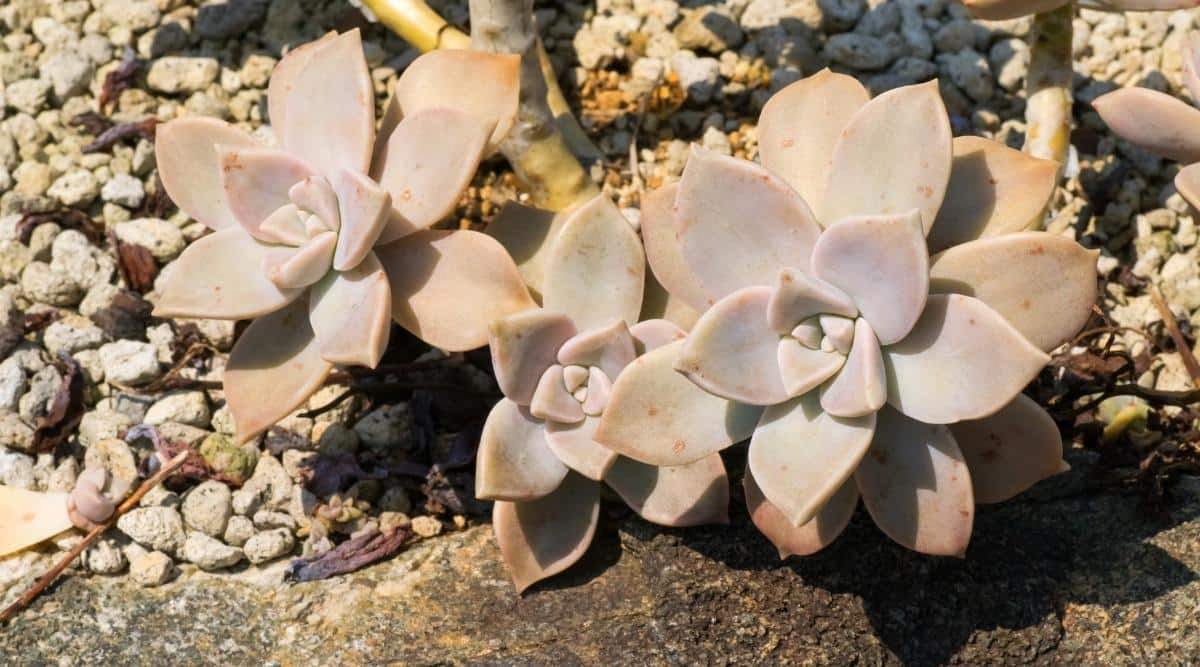
Hailing from central and eastern Mexico, Graptopetalum paraguayense flourishes in regions with abundant sunlight and warmth. However, they can adapt to lower light levels and cooler temperatures, depending on the seasonal changes.
Where to Buy
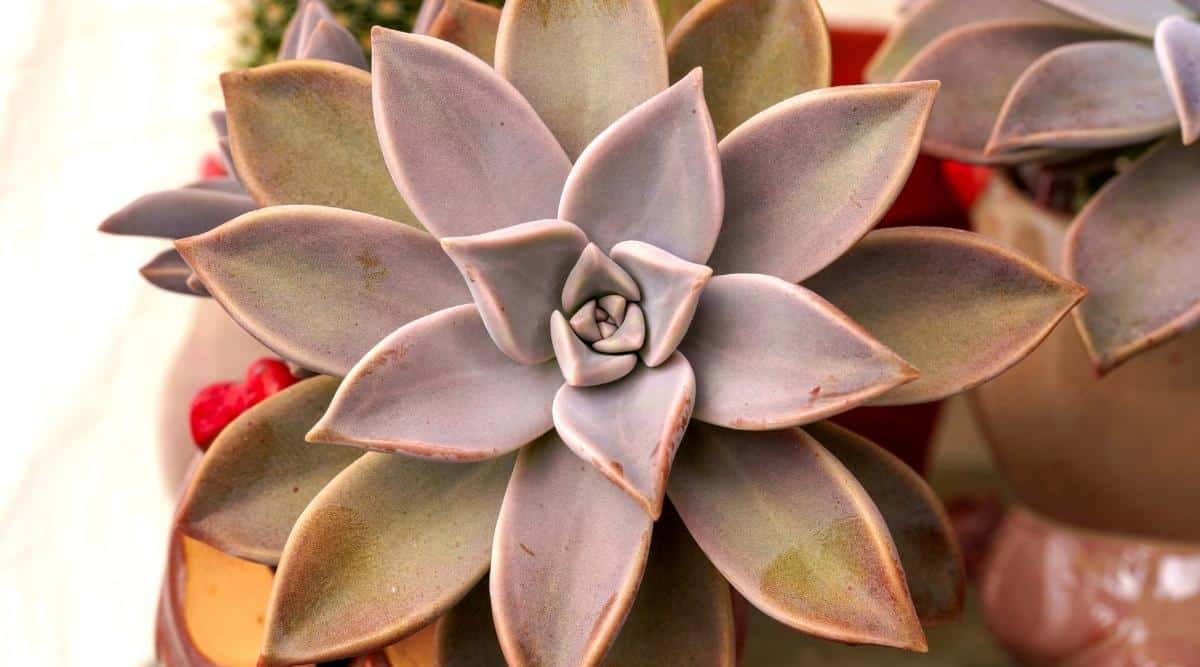
The initial selection of your plant is crucial. Opt for a thriving specimen to ensure successful cultivation. Consider these factors when picking the right plant for your indoor garden.
Choose a Reliable Nursery
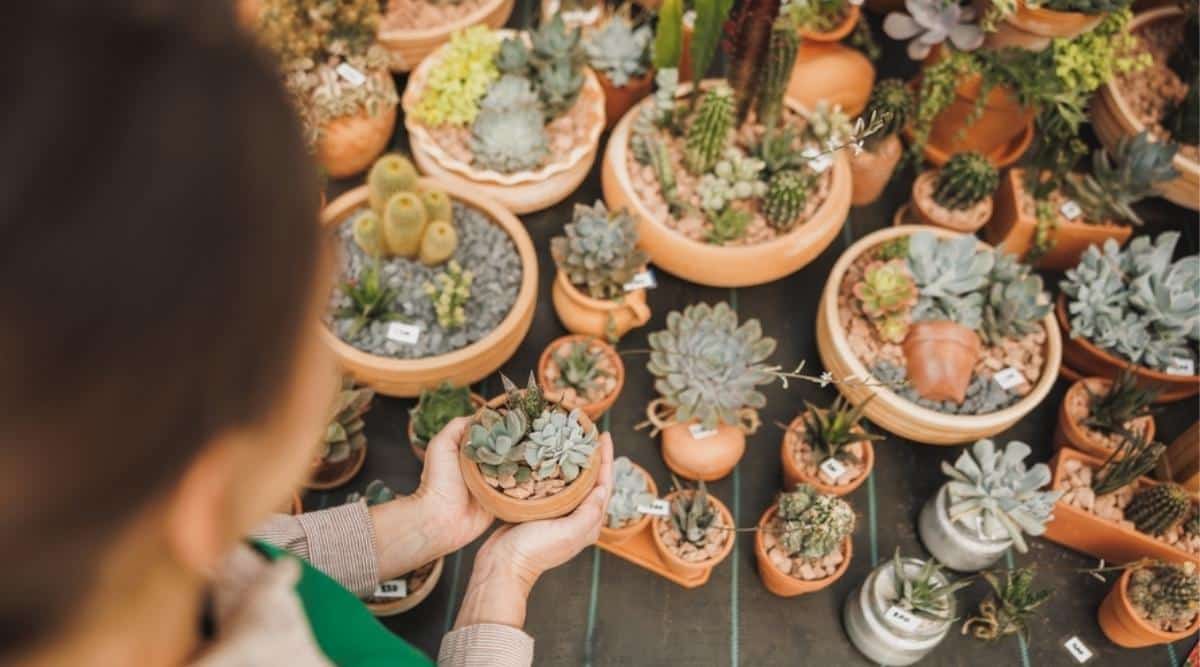
Even though they may come at a higher price, a plant bought from a garden center is likely to have received superior care compared to one from a supermarket floral department. It is sometimes mistaken for the Graptosedum ‘Ghosty’ plant, so be vigilant and verify the label when purchasing.
You might also consider obtaining plant starts from a friend or neighbor. Ghost plants are known for their ease of vegetative propagation, so chances are someone you know has young plants for adoption. Just ensure you inspect the starts for any signs of insect pests before taking them home.
Inspect for Signs of Overwatering
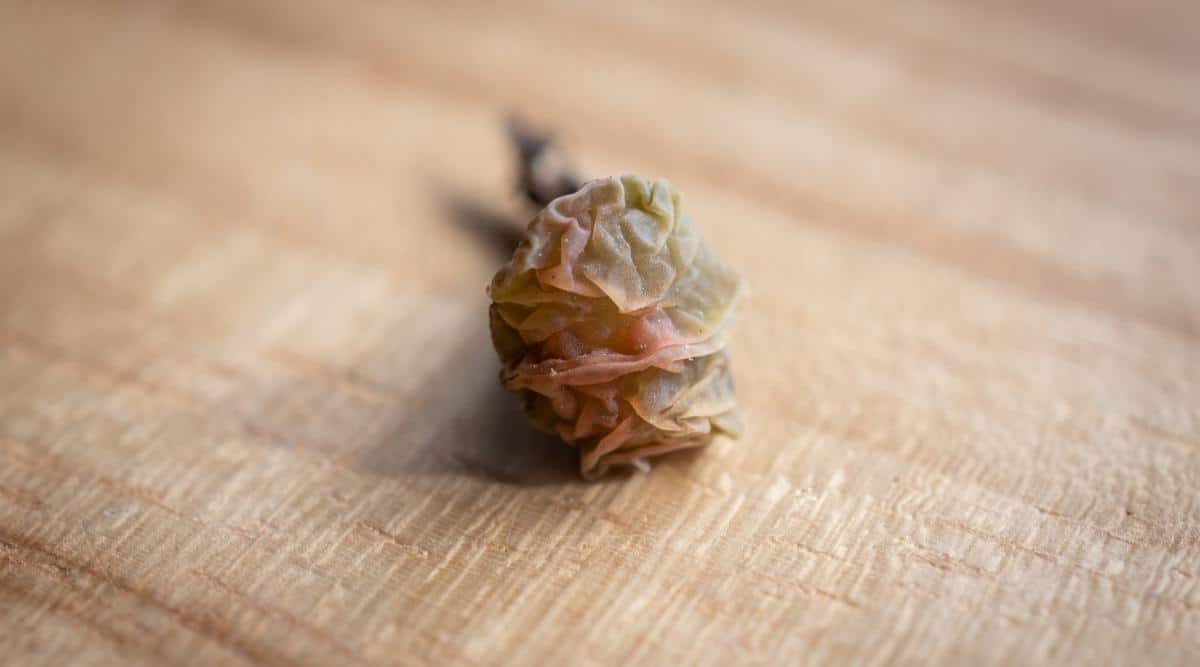
Check the plant for signs of overwatering: Are the leaves firm and fleshy or soft and oozing? Do they easily detach when touched? Examine the soil’s appearance and smell. Is the pot noticeably heavier, or is the plant sitting in waterlogged soil with standing water?
Squishy or easily falling leaves suggest overwatering and potential rot issues. If the soil emits a rotten odor, it likely lacks sufficient oxygen at the roots, making plant recovery doubtful.
Search for Common Pests
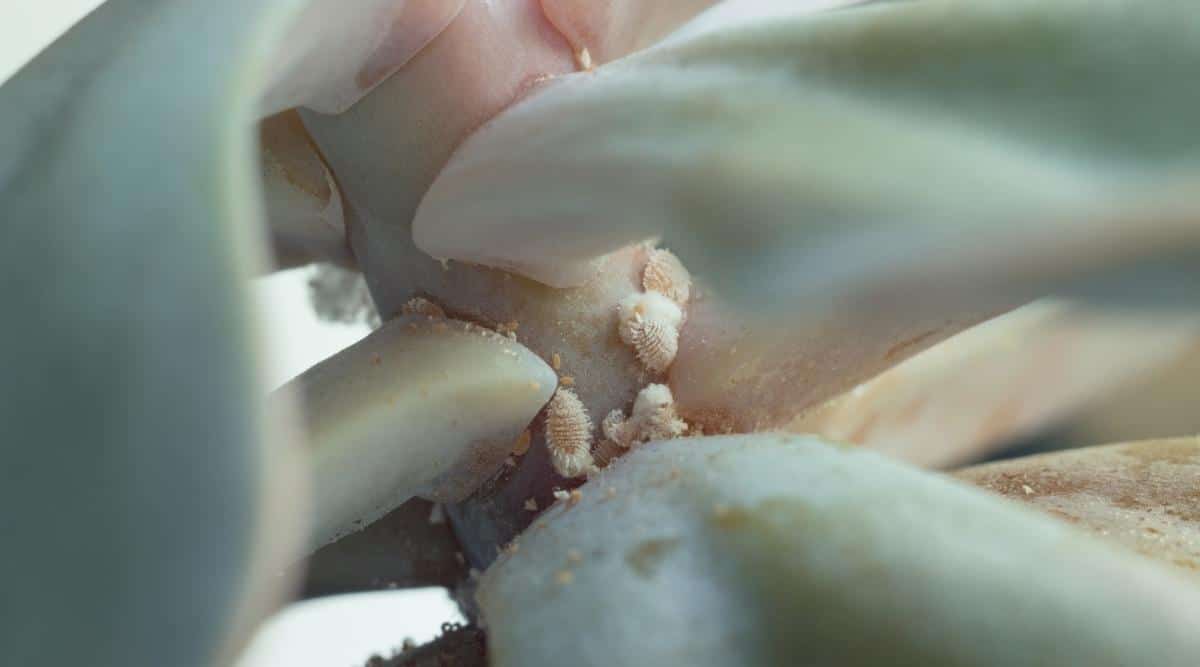
Avoid plants with mealy bugs, scale insects, spider mite webbing, or aphids as these pests can spread to other houseplants, creating an infestation. If unsure about pests, keep the new plant separate from others initially and observe for insect activity before integrating it with your existing plants.
Growing Tips
Successful growth of succulents like the Graptopetalum paraguayense in your home depends on several critical factors such as the right soil, appropriate watering, optimal lighting, and suitable containers. Let’s delve into the care requirements for this unique succulent.
Lighting Requirements
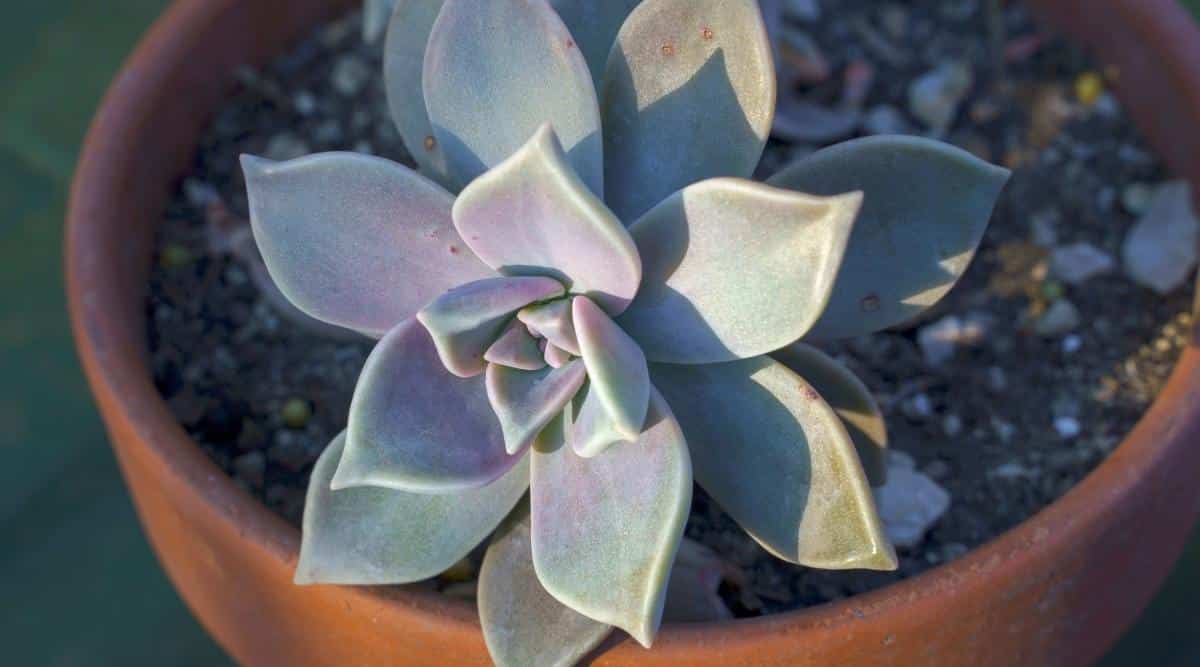
Being native to deserts, Graptopetalum paraguayense displays richer reddish-yellow hues with increased exposure to sunlight. For optimal color development, the plant requires at least 6 hours of direct sun each day.
The intensity of sunlight influences the plant’s overall growth pattern. In full sun conditions, the plant remains compact and sturdy with minimal stretching. Conversely, inadequate sunlight results in etiolation, causing the plant to elongate and adopt a more open, vine-like appearance.
Watering Guidelines
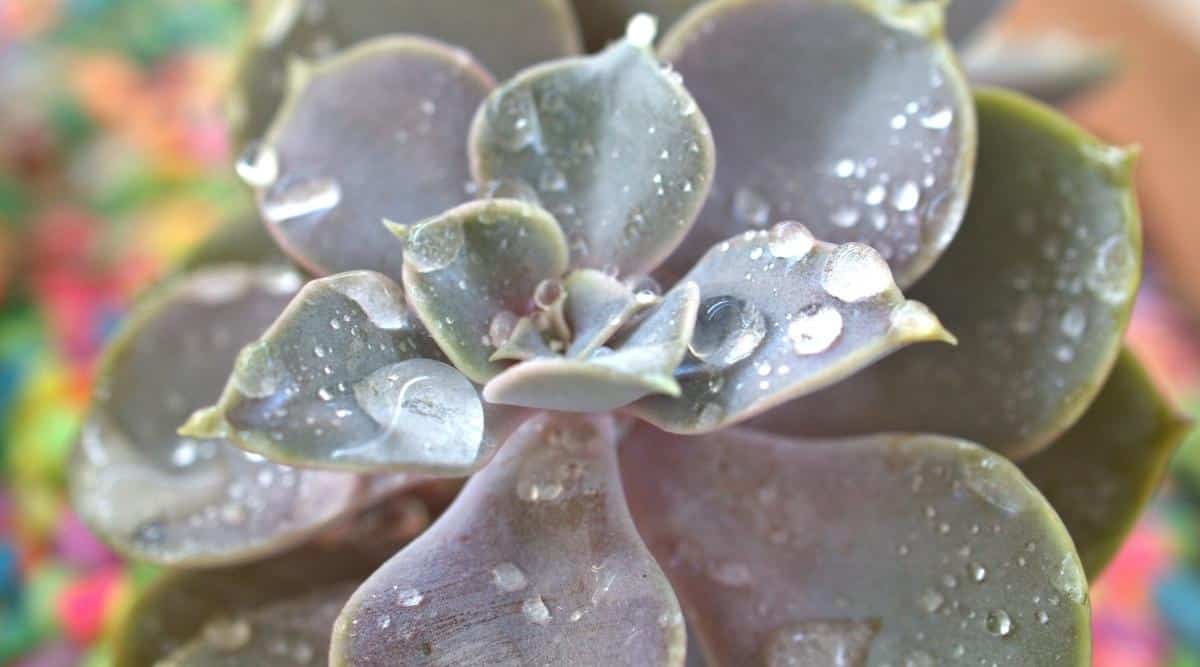
Ghost plants possess shallow roots that usually stay near the soil’s surface, a trait adapted to their natural desert environment. To replicate their preferred conditions, water the plant thoroughly to allow complete saturation of the soil.
When watering any plant, including Graptopetalum paraguayense, avoid using extreme temperatures and ensure the water reaches the entire root system. This approach mimics the sporadic and abundant rain patterns typical in the plant’s habitat.
Watering Guidelines:
Opt for lukewarm water to keep your plants happy and healthy.
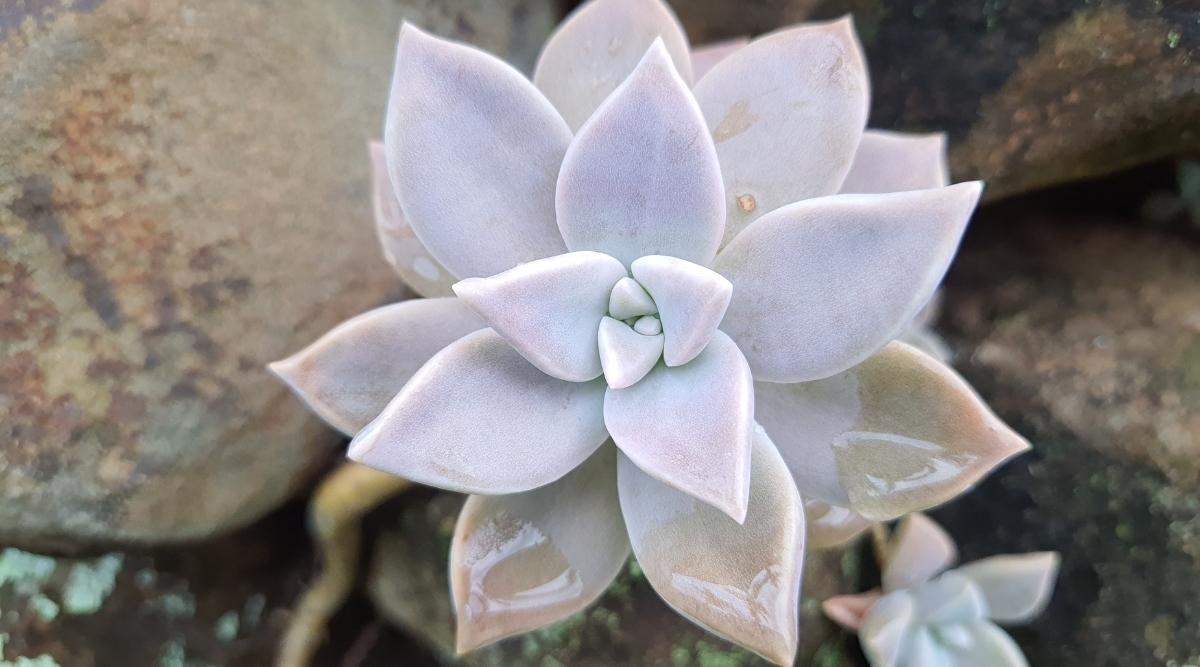
When determining the need for watering, factors such as location, season, and container size play crucial roles. To assess moisture levels, rely on your index finger inserted into the soil to gauge wetness. If the soil feels moist, postpone watering. Conversely, if it’s dry, provide a thorough watering session.
It’s wise to check weekly for watering needs, erring on the side of caution by underwatering to prevent detrimental overhydration. Plants are more resilient to slight droughts than waterlogging.
Soil Selection:

Choosing the right potting mix significantly impacts plant health. Desert-specific mixes containing organic components like peat moss aid in water retention, while inorganic elements like perlite enhance soil aeration. The addition of sand and limestone helps maintain a balanced pH.
Furthermore, ensure a well-draining container with adequate drainage holes to prevent waterlogging and encourage oxygen flow to the roots for optimal nutrient absorption.
Temperature Considerations:
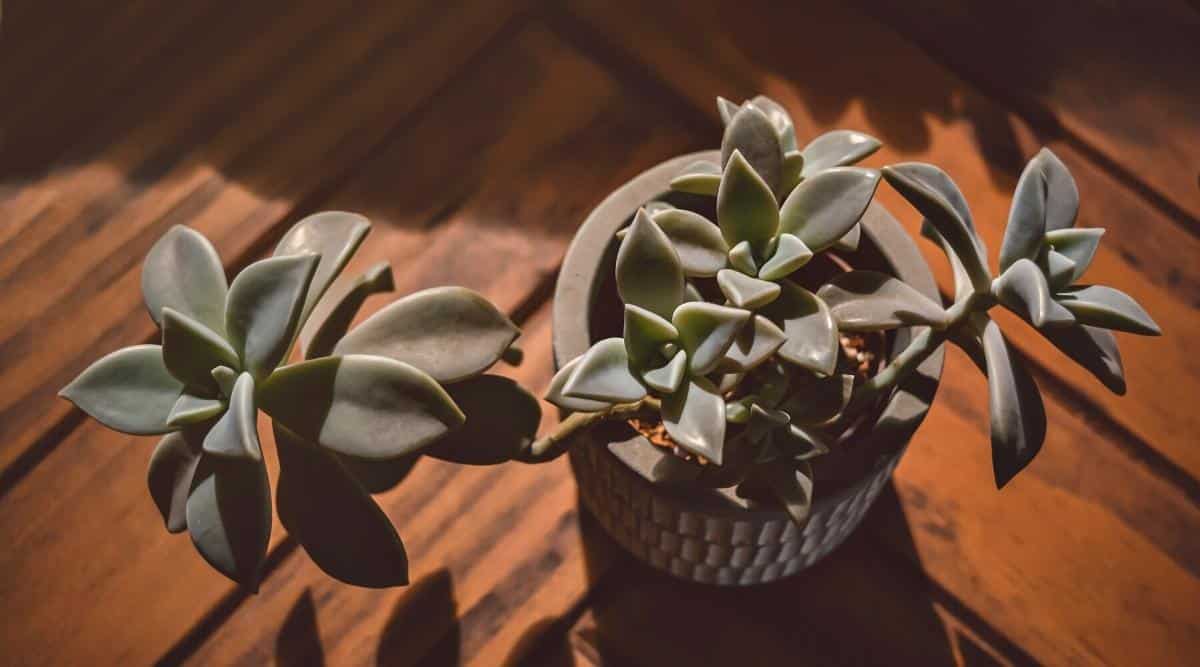
Ghost plants thrive in temperatures above 75°F but can withstand lows of 20°F, showcasing remarkable adaptability. This flexibility extends to indoor conditions, eliminating the need for extreme temperature adjustments.
By accommodating temperature fluctuations, ghost plants seamlessly integrate into household environments.
Fertilization Practices:

Ghost plants have modest fertilizer requirements, with a quality cactus mix often containing sufficient nutrients. Minimal fertilization ensures plant health without risking nutrient overload.
Upon the original planting, the organic components within the soilless mixture offer essential nutrients when broken down by peat moss, compost, or humus.
For those instances where supplemental feeding is required for your Graptopetalum paraguayense, there are readily available cactus and succulent fertilizers designed to nourish your ghost plant effectively. Always adhere to the instructions provided on the product label regarding the frequency and quantity of fertilizer application to prevent potential harm or demise to your plant.
It is advisable to apply fertilizers during the plant’s active growth phase, which typically occurs in the spring and summer months, to ensure that your plant receives the additional nutrients it needs.
Maintenance
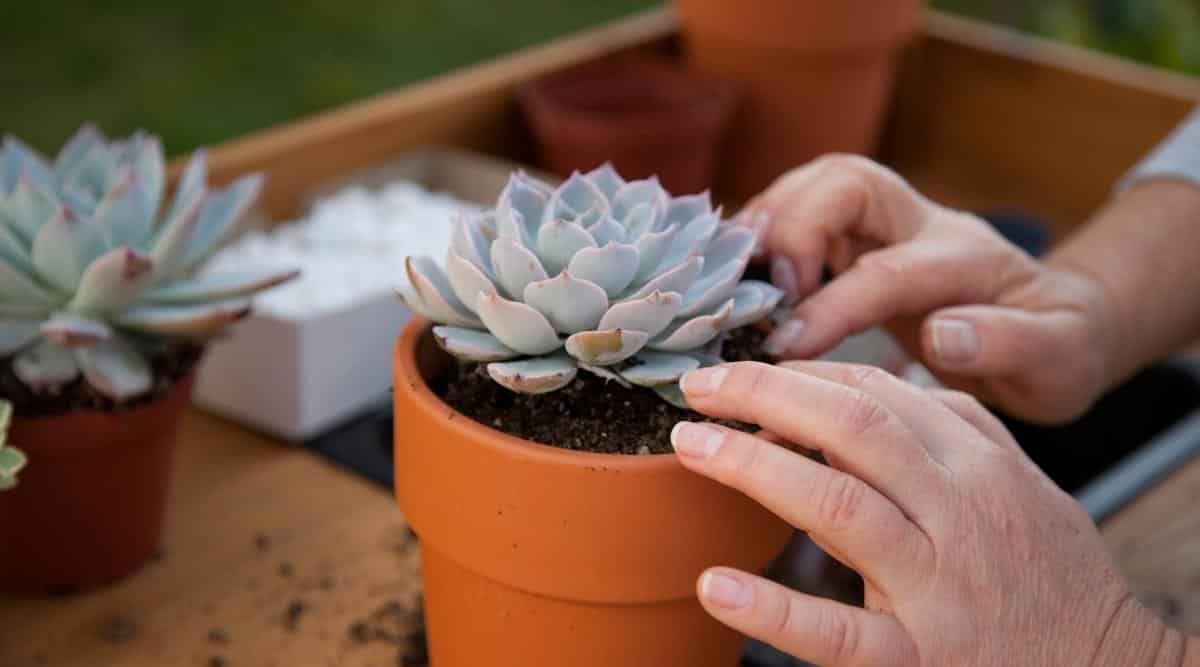
Ghost plants, like most desert flora, are generally low-maintenance houseplants, with the Graptopetalum paraguayense being no exception. Regular care includes weekly water checks, adequate light exposure, and planting in a suitably sized pot relative to the plant’s dimensions.
While these are the basic care requirements, there are occasional needs such as fertilization, pruning, and repotting that are equally essential but less frequent.
Repotting
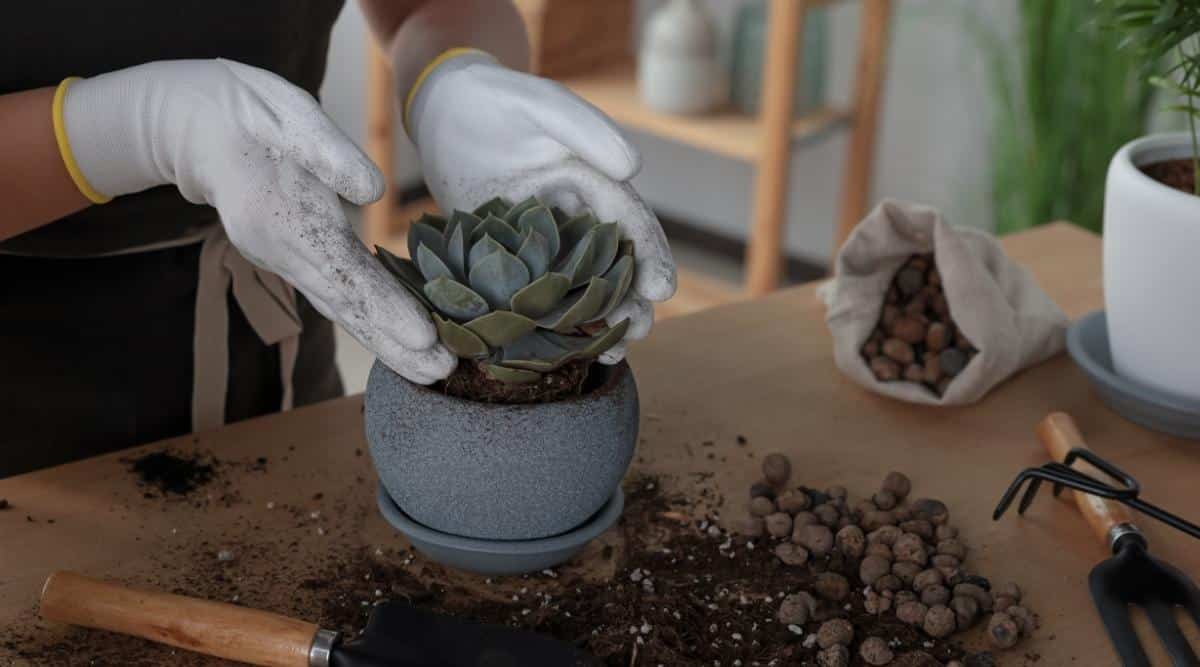
Repotting your ghost plant is not a frequent task, typically required every few years at most. When the time comes to repot, remember to:
Drainage
Ensure that the new pot has adequate drainage holes at its base.
Size
Pot size is crucial. Typically, when repotting a ghost plant, move up one pot size – e.g., from a 4” container to a 6” one. This slight increment in size manages the plant’s growth rate, allowing the roots to expand without the top growth becoming excessively sprawling. Additionally, sizing up helps regulate soil moisture around the roots, preventing excess water retention and potential issues like root rot.
Time of year
The late winter/early spring period is optimal for repotting. By transitioning your plant into fresh soil within a new pot during its active growth phase, your Graptopetalum paraguayense will have the space and nutrients needed to flourish during the growing season.
Pruning
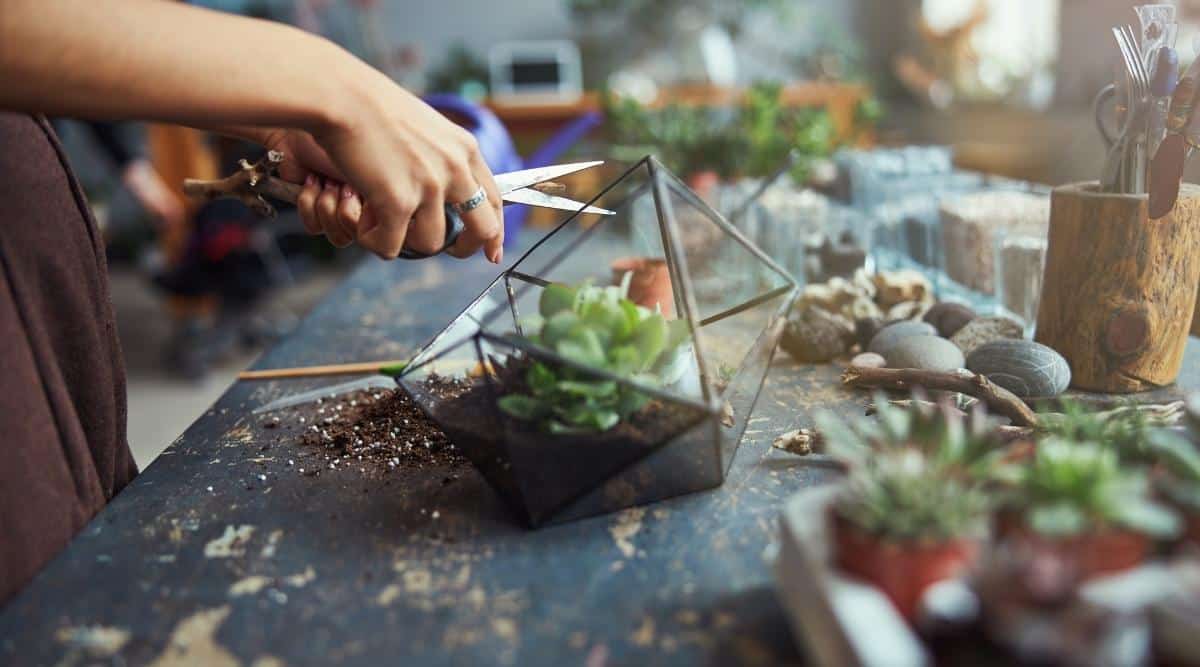
Periodic pruning may be necessary for Graptopetalum paraguayense to uphold its size and shape. If your plant has elongated due to insufficient light, pruning can help. The late winter/early spring phase is generally recommended for pruning tasks.
As you enter the active growing season, it’s time to consider pruning your plants because new growth is right around the corner. When it comes to pruning, remember not to exceed removing more than a third of the plant’s top growth. This ensures that ample leaves remain to sustain the plant nutritionally until fresh growth emerges. Over-pruning can stress the plant, making it more prone to insect and disease attacks.
During pruning, focus on identifying the nodes and internodes along the plant stems. Nodes are where leaves sprout, while internodes are the stretches between nodes. When deciding on the desired stem length to retain, cut at a slight angle above a node using clean pruners. The plant will develop new leaves from the last node near the cut. You can utilize the pruned pieces for propagating new plants.
Propagation
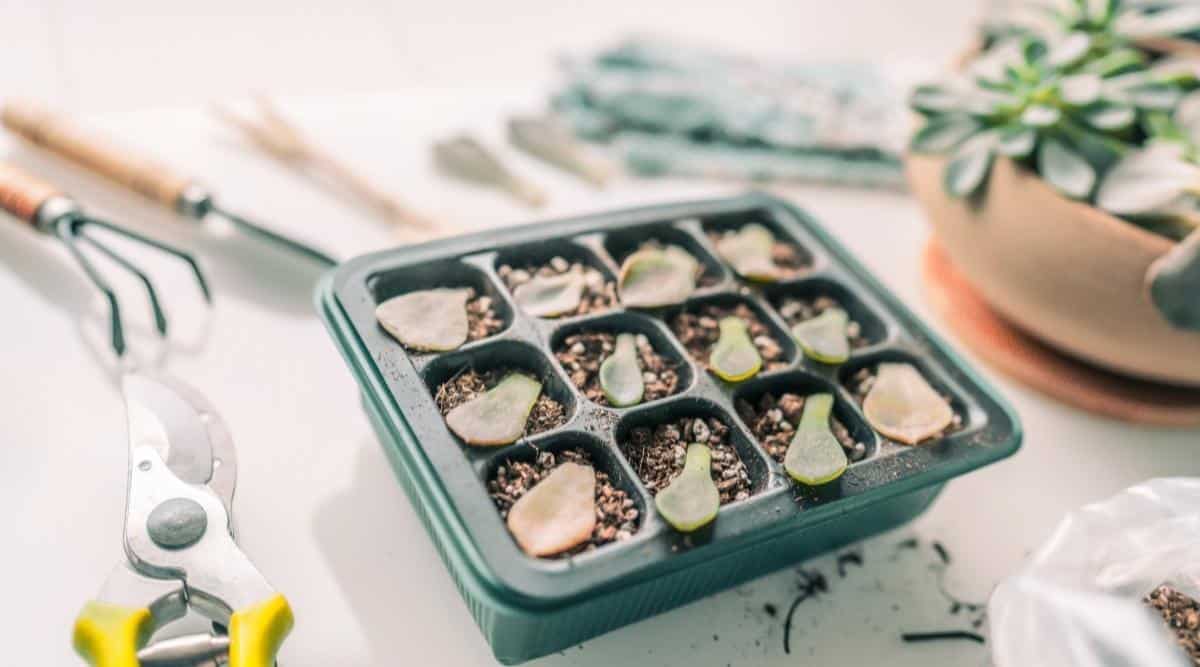
Most plants reproduce either vegetatively or sexually. For Graptopetalum paraguayense, vegetative reproduction using leaves, stems, or offsets of older plants is the simplest method to expand your ghost plant collection.
Leaf Cuttings
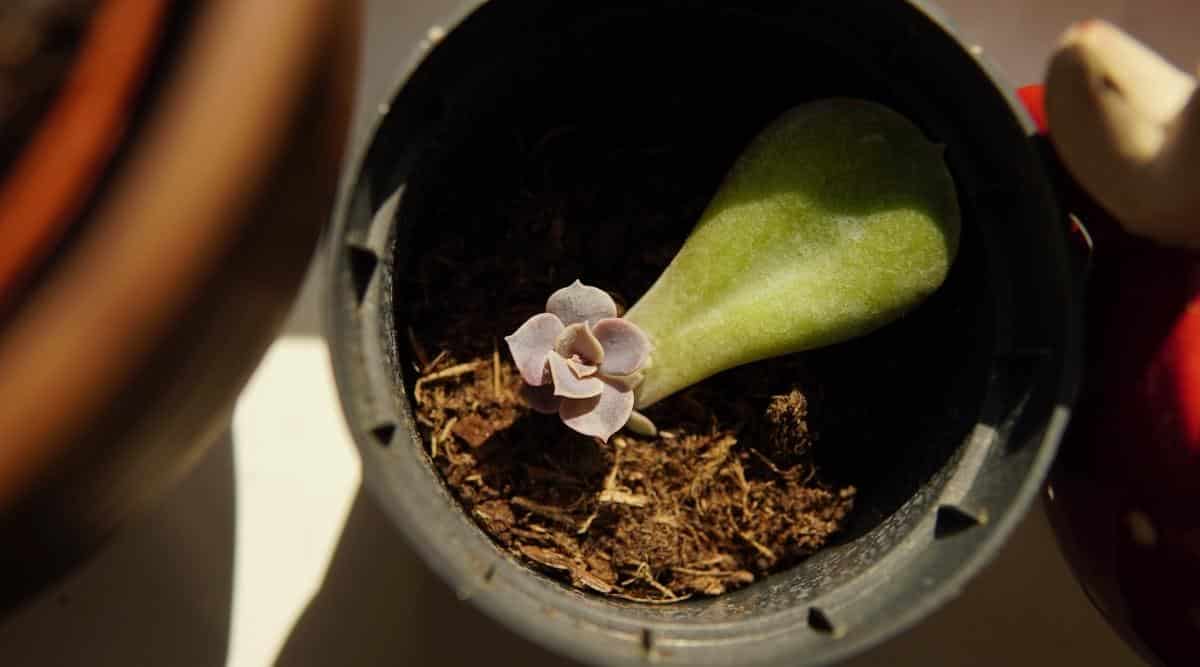
One effective propagation technique is leaf cuttings. By extracting leaves from your ghost plant and planting them in soil, new plants will gradually emerge.
Leaf Cutting Propagation Steps
- Water the ghost plant a day or two before propagating.
- Select healthy leaves.
- Remove leaves at the base without damaging them.
- Allow the leaf end to callus over for a few days.
- Prepare the leaf for planting.
- Insert the leaf, callus end down, into damp cactus potting mix.
- Keep the pot in a well-lit area away from drafts.
- Maintain damp soil by checking and watering when needed.
In a few weeks, new growth will appear at the soil level on the new plant, eventually replacing the original leaf that served its purpose.
Stem Cuttings
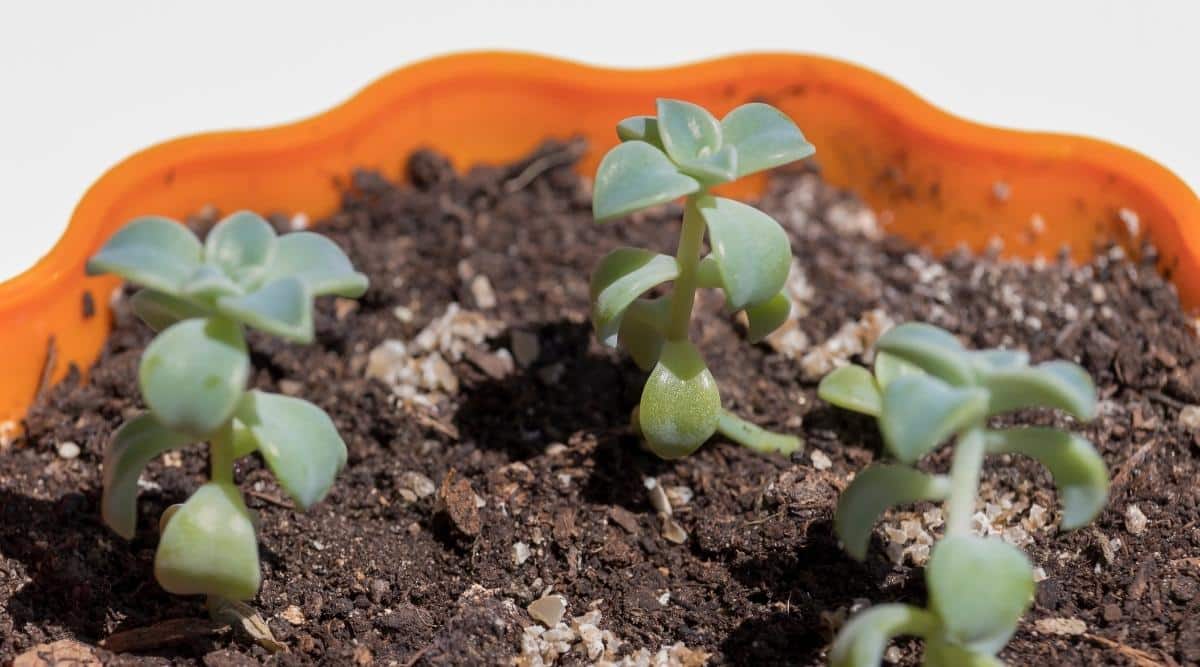
Similar to leaf cuttings, you can grow new ghost plants from stem cuttings. The callused stem with leaves, instead of a leaf, is buried in damp cactus media. Once roots establish, move the new plant to its own pot.
Off Shoots

Happy ghost plants might produce offshoots at the base. These are identical plants to the mother plant and can be detached and potted separately. Carefully detach the offshoot from the mother plant and let it callus before planting it.
Planting Tips
For the pup of a ghost plant, make sure to use a pot filled with damp cactus mix and place it in a well-lit window. Check the soil regularly to ensure the right level of moisture for the pup’s growth.
If the pup has its own root system, carefully transplant it into its individual pot by gently handling the roots.
Dealing with Pests
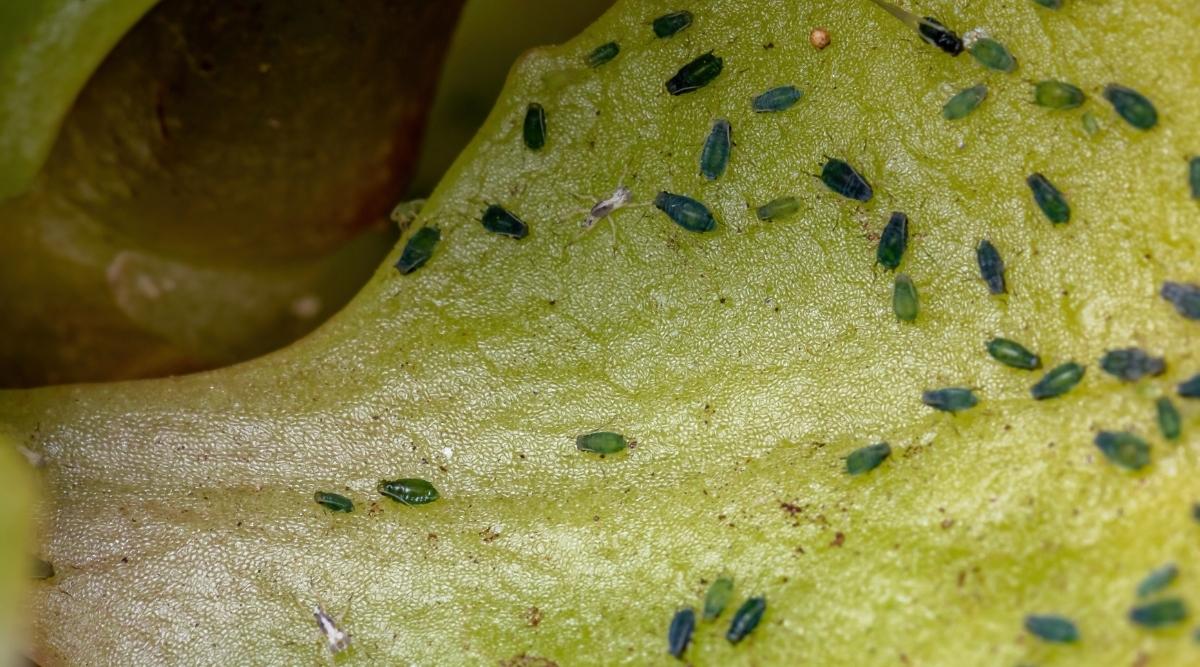
Although ghost plants are usually resilient to pests and diseases, occasional issues like mealy bugs, spider mites, or aphids can arise, which can be treated with insecticidal soap or Neem oil. Using a cotton swab with rubbing alcohol can also help dislodge insects without harming the plant.
A solution of 10% rubbing alcohol and water can effectively eliminate pests without damaging the plant tissue.
Final Words
Ghost plants are a perfect addition to any indoor garden due to their adaptability and unique responses to light levels. They are ideal for novice gardeners and, with proper care, will thrive and impress with their beauty.
Ensuring proper drainage in the new pot is crucial for the plant’s health.
When repotting ghost plants, consider increasing the pot size by one step to manage growth and moisture levels effectively. This practice helps prevent issues like root rot and ensures the plant’s well-being.
For optimal results, repotting during late winter or early spring sets the plant up for a successful growing season in fresh soil with ample nutrients.

